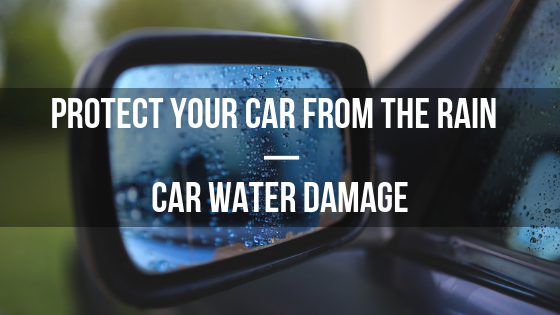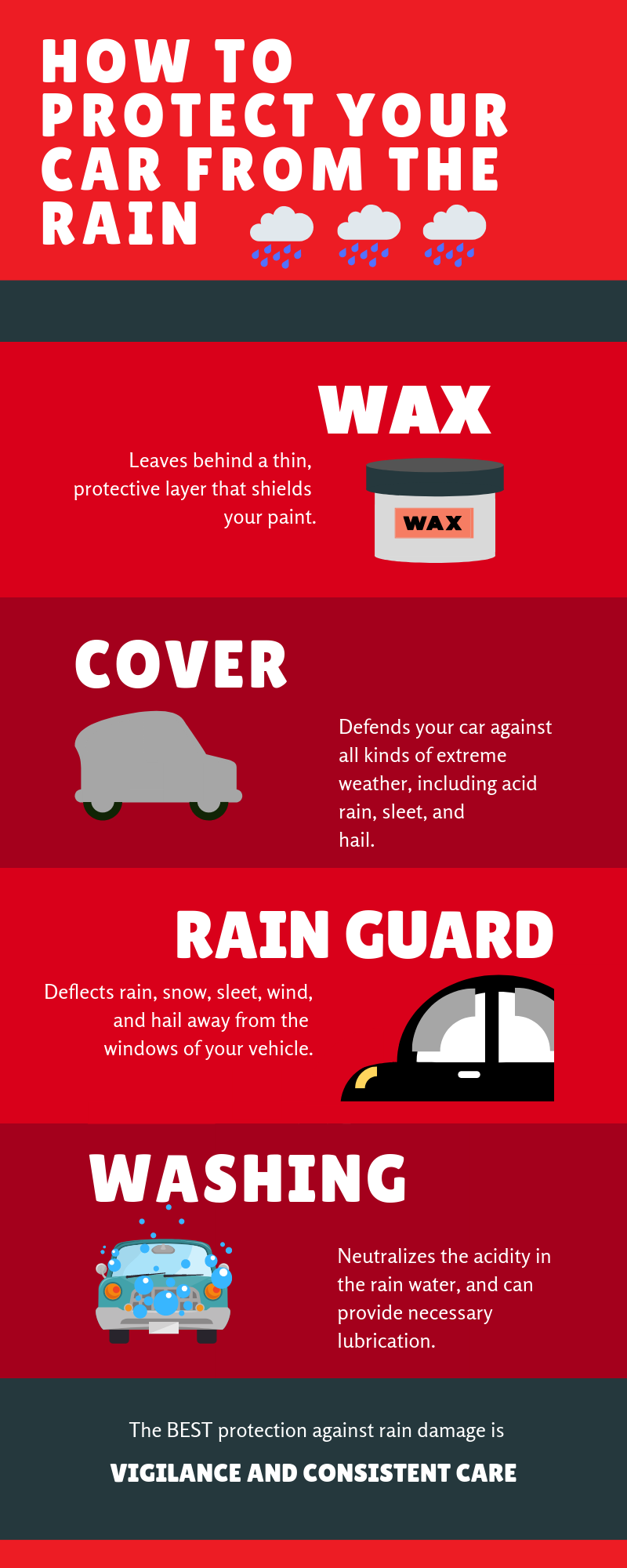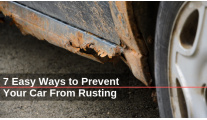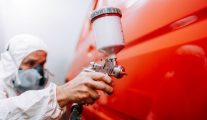
If you’re a car enthusiast, you know that rain can pose a major problem for your car’s paint. Here, we’ll address some commonly asked questions: Is rain really bad for your car? Does it cause irreparable damage? What can be done about it? With our help, you’ll be better equipped to keep your car looking as good as the day you brought it home.
How Rain Causes Damage to Your Car
Let’s start with the good news: while rain can damage the paint on your car, it rarely causes severe harm to the exterior structure of your vehicle. But what is it about rain that makes it enemy number one for your newly finished paint job?
Pollutants and contaminants in the air are sometimes absorbed by falling rain—this is called acid rain. When acid rain falls and dries on your car, it can etch into your car as water spots and dull the shine of your paint. The longer you leave these contaminants and evaporated water spots on your vehicle, the more difficult they become to remove. Many people don’t think to address this problem early enough, leaving the damage to accrue to the point that specific remedies are necessary, which we’ll address later on.
Let’s also not forget about the extreme case—flooding. If you find yourself dealing with a soaked interior, do not panic and follow these steps:
- Get any obvious water out with a wet/dry vac. If the weather clears up in the days after a major flood, let your car dry in the sun with all your doors and windows open.
- You’ll need to establish air flow to thoroughly remove any lingering dampness. You can set up one or two shop fans (the more air the better) so that they blows across your car’s seats from one side to the other. Add a dehumidifier to eliminate any remaining moisture in the air.
- After you’ve thoroughly dried your interior, it’s time to clean. Flood waters collect debris, mud, and trash, all of which can end up in your car. It’s easy enough to clean the hard surfaces with soap or interior cleaners, but addressing carpet and upholstery is trickier. Find a quality spray-on carpet cleaner that you’ll leave on for some time and then vacuum away. You can use this method to clean your upholstery, too.
- Mold growth is the final monster in this battle. Mold can come back and wreak havoc on your interior with strange smells and disease-causing bacteria. Sprinkle baking soda or other water-absorbing products that will work over time to lessen the chances of mold taking root in your car.
How To Protect Your Car From the Rain
Your best protection against rain is vigilance and consistent care, especially if you live in a rainy area. Your paint maintenance should start before the rain even hits—here are some helpful tips for keeping that lustrous paint job intact.
Waxing your car is a process that involves applying a coat of wax to your paint, allowing it to harden, and then buffing it with a towel or polisher. This process leaves behind a thin, protective layer of wax that protects your paint by acting as a shield against harmful UV rays while providing a glossy finish. Wax will prevent that acid rain from building up and leaving water spots—instead, the water “beads up” and rolls off your car. Apply a new coat of wax every three months or so to ensure that it’s doing its job. You might also consider buying a car cover, which will defend your car against all kinds of extreme weather, including acid rain, sleet, and hail. If inclement weather causes scrapes and the like, invest in a car scratch repair kit.
Rain guards and window visors work like a charm to deflect rain, snow, sleet, wind, and hail away from the windows of your vehicle. Visors fit on the top of your window sills, jutting outwards to allow you to keep your windows open for ventilation without worrying about unwanted elements seeping into your car, preventing the interior from getting wet. This also counteracts mist formation on your windows, and actually saves you money on gas by eliminating air flow into your cabin and reducing wind drag.
Finally, make sure that you regularly wash your car. Those contaminants from acid raid will wreak havoc if left alone, so wash every week or two if you live in a particularly wet region. Regular water will neutralize the acidity in the rain water, but be careful to use a quality car shampoo. This will provide you with the necessary lubrication, preventing dirt in the water stains from scratching the surface of your car and making matters worse.
Dealing with Rain Damage
The most important thing to do after rainfall is to wash your car. Many people think rain is an inherent good for their car, assuming that it will simply provide a much-needed soak. As we’ve explained above, that’s actually not true. Washing your car first will usually take care of any immediate acid rain spots from recent weather storms; however, if you’ve neglected cleaning your car for a while, you might need something a little more heavy-duty, such as automotive water spot remover spray.
There’s also a remarkable new debris removal technique that uses engineered resin to move smoothly over paint: auto detailing clay. It can remove contaminants non-abrasively from your paint, glass, fiberglass, and metal, dealing with the tough pollutants that a simple polish won’t address. As the clay glides over your car, unwanted particles stick and are removed. This is the best way to deal with any airborne pollutants that may be plaguing your paint job, including acid rain, brake dust, industrial fallout, and rail dust that often contains metal particles.
There you have it—everything you need to know about the steps you can take to prevent rain damage and deal with existing rain marks. The next time a storm rolls around, you’ll know what to do.




